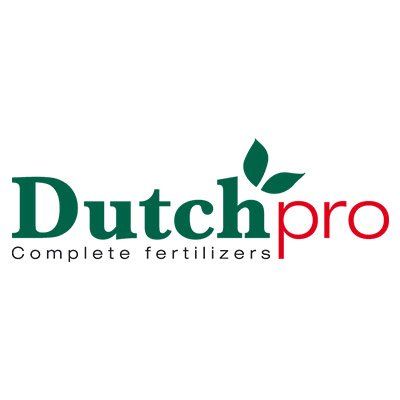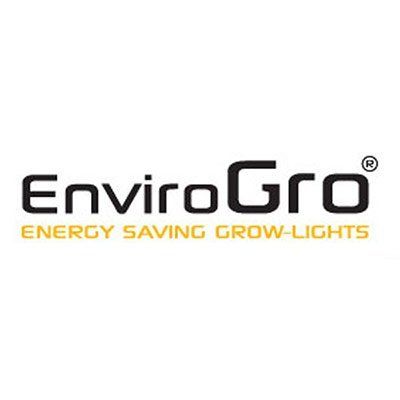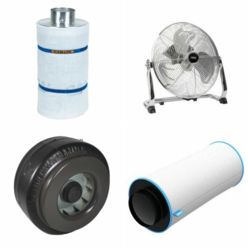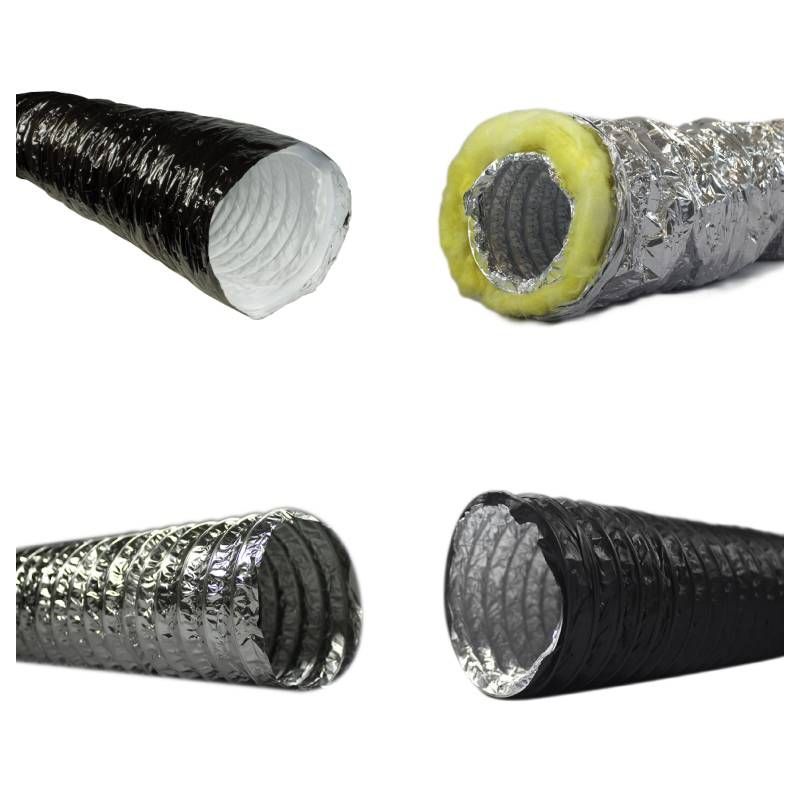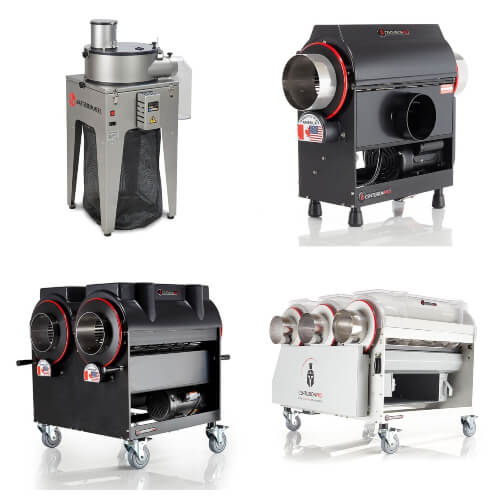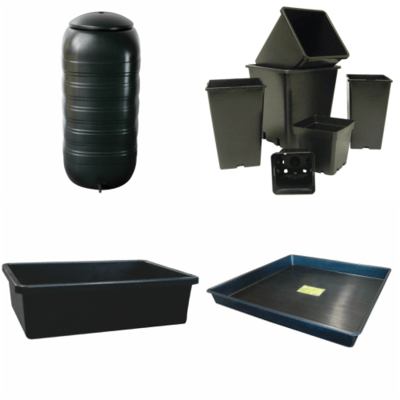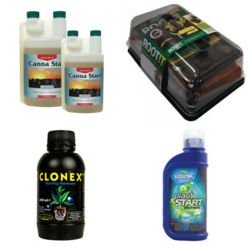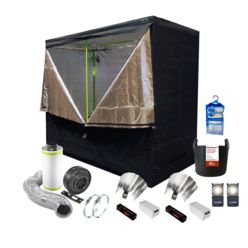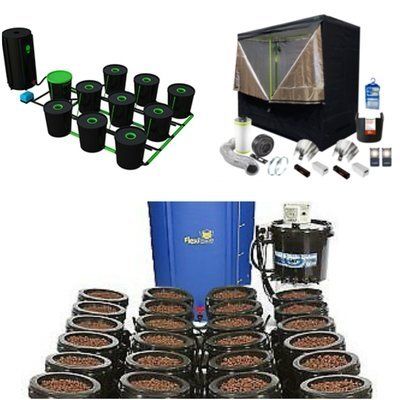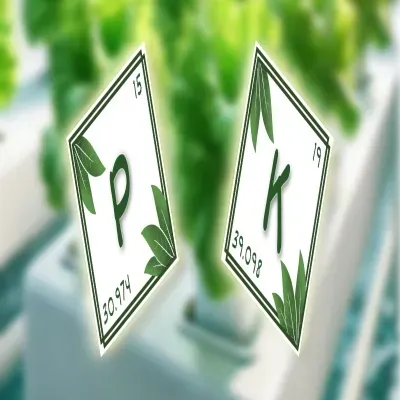Emporium Hydroponics for all your indoor growing needs!
Tents, lights, fans, filters, grow systems, all your plant feeds and much more.
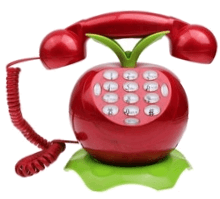 Call 020 7358 9920 for bulk deals and enquiries
Call 020 7358 9920 for bulk deals and enquiries
Free Delivery for Orders Over £250, within the M25
Orders can also be taken over the phone and delivered at a time and place of your convenience.
About Us
Emporium Hydroponics are well-established specialists in all aspects of growing plants in sand, gravel, or liquid, with added nutrients but without soil.
Read more >
We have a wealth of knowledge and experience in all aspects of indoor growing and can always offer advice for your needs.
Please feel free to contact us by email or telephone and we will be happy to assist!
Stay Connected
@atami.uk Rokzbastic is a flowering product that can be used from the last weeks of flowering throughout the fruiting and ripening phase. Its unique PK 10-20 ratio ensures that your plants receive everything they need to produce firm flowers and fruit.
#hydroponics #hydroponic #generalhydroponics #hydroponicsystem #hydroponicgarden #hydroponicwars #hydroponicfarming #hydroponichippies #hydroponicstore #hydroponicfarm #semihydroponics #microbelifehydroponics #hydroponicgardening #hydroponiclettuce #hydroponicstrawberries #traffordhydroponics #hydroponicgrowing #hydroponicsupplies #hydroponicsupply #hurricanehydroponics #hydroponicsystems #hydroponicsfarm #ukhydroponics #hydroponichippie #hydroponicresearch #hydroponicvegetable #hydroponicnutrients #hydroponicsinc #hydroponichippies101 #gracefulhydroponics
Athena PK is a balanced bloom boosting complement to our Bloom fertilisers. This clean liquid booster is designed to supplement during the mid- to late-flowering phase.
Athena PK is a low Nitrogen booster that provides additional Phosphorus and Potassium that high-yielding plants require for maximal production.
#hydroponics #hydroponic #generalhydroponics #hydroponicsystem #hydroponicgarden #hydroponicwars #hydroponicfarming #hydroponichippies #hydroponicstore #hydroponicfarm #semihydroponics #microbelifehydroponics #hydroponicgardening #hydroponiclettuce #hydroponicstrawberries #traffordhydroponics #hydroponicgrowing #hydroponicsupplies #hydroponicsupply #hurricanehydroponics #hydroponicsystems #hydroponicsfarm #ukhydroponics #hydroponichippie #hydroponicresearch #hydroponicvegetable #hydroponicnutrients #hydroponicsinc #hydroponichippies101 #gracefulhydroponics
Ferro's PK Bloom Booster Enriched is a PK Booster enriched with plant hormones, amino acids and around 50 different trace elements.
Use PK Bloom Booster Enriched throughout the flowering phase of your plants.
The powerful PK Bloom Booster ensures that your plants produce strong blooms in abundance!
#hydroponics #hydroponic #generalhydroponics #hydroponicsystem #hydroponicgarden #hydroponicwars #hydroponicfarming #hydroponichippies #hydroponicstore #hydroponicfarm #semihydroponics #microbelifehydroponics #hydroponicgardening #hydroponiclettuce #hydroponicstrawberries #traffordhydroponics #hydroponicgrowing #hydroponicsupplies #hydroponicsupply #hurricanehydroponics #hydroponicsystems #hydroponicsfarm #ukhydroponics #hydroponichippie #hydroponicresearch #hydroponicvegetable #hydroponicnutrients #hydroponicsinc #hydroponichippies101 #gracefulhydroponics
Ionic PK Boost is for the final few weeks before harvest. This product can be used in conjunction with Ionic Bloom and it allows you extra control over both Potassium and Phosphorus that your plant needs at the flowering stage.
#hydroponics #hydroponic #generalhydroponics #hydroponicsystem #hydroponicgarden #hydroponicwars #hydroponicfarming #hydroponichippies #hydroponicstore #hydroponicfarm #semihydroponics #microbelifehydroponics #hydroponicgardening #hydroponiclettuce #hydroponicstrawberries #traffordhydroponics #hydroponicgrowing #hydroponicsupplies #hydroponicsupply #hurricanehydroponics #hydroponicsystems #hydroponicsfarm #ukhydroponics #hydroponichippie #hydroponicresearch #hydroponicvegetable #hydroponicnutrients #hydroponicsinc #hydroponichippies101 #gracefulhydroponics
Resinator is a revolutionary flower enhancer that will dramatically increase essential oil production and flower mass.
Resinator provides the highest quality soluble phosphorus and potassium for translocation to flowering sites.
#hydroponics #hydroponic #generalhydroponics #hydroponicsystem #hydroponicgarden #hydroponicwars #hydroponicfarming #hydroponichippies #hydroponicstore #hydroponicfarm #semihydroponics #microbelifehydroponics #hydroponicgardening #hydroponiclettuce #hydroponicstrawberries #traffordhydroponics #hydroponicgrowing #hydroponicsupplies #hydroponicsupply #hurricanehydroponics #hydroponicsystems #hydroponicsfarm #ukhydroponics #hydroponichippie #hydroponicresearch #hydroponicvegetable #hydroponicnutrients #hydroponicsinc #hydroponichippies101 #gracefulhydroponics
An extremely potent booster for flowering which stimulates a huge weight gain when plants are fruiting.
Just add 3-5ml to your regular feeding schedule and a 1 litre bottle will go a long way!
ROX is a nutrient supplement designed to substantially enhance flowering in all blooming plants. ROX will greatly increase the yield, quality and appeal of your plants.
SHOGUN PK Warrior 9/18 uses its unique Phosphorous and Potassium ratio to outflank all other PK additives with a recipe that has been strategically designed to attack your plants with yield enhancing ingredients.
#hydroponics #hydroponic #generalhydroponics #hydroponicsystem #hydroponicgarden #hydroponicwars #hydroponicfarming #hydroponichippies #hydroponicstore #hydroponicfarm #semihydroponics #microbelifehydroponics #hydroponicgardening #hydroponiclettuce #hydroponicstrawberries #traffordhydroponics #hydroponicgrowing #hydroponicsupplies #hydroponicsupply #hurricanehydroponics #hydroponicsystems #hydroponicsfarm #ukhydroponics #hydroponichippie #hydroponicresearch #hydroponicvegetable #hydroponicnutrients #hydroponicsinc #hydroponichippies101 #gracefulhydroponics
Let your plants take root in the Biobizz light mix soil in your grow tent!
#hydroponics #growyourown #gardening #urbanfarming #horticulture #greenhouse #hydroponicsystem #hydroponic #indoorgrow #indoorplants #grow #hydro #organic #agriculture #garden #indoorgardening #growtent #plants #cultivation #growlights #growroom #farming #indoorgarden #growerslove
Keep a check on the acidity or alkalinity of the nutrient solution in your grow tent with this pH pen from Bluelab!
#hydroponics #growyourown #gardening #urbanfarming #horticulture #greenhouse #hydroponicsystem #hydroponic #indoorgrow #indoorplants #grow #hydro #organic #agriculture #garden #indoorgardening #growtent #plants #cultivation #growlights #growroom #farming #indoorgarden #growers
Keep the air circulating for your plants in the grow tent with this mixed-flow fan!
#hydroponics #growyourown #gardening #urbanfarming #horticulture #greenhouse #hydroponicsystem #hydroponic #indoorgrow #indoorplants #grow #hydro #organic #agriculture #garden #indoorgardening #growtent #plants #cultivation #growlights #growroom #farming #indoorgarden #growers
Use the best nutrients for your plants in the grow tent such as these from Athena!
#hydroponics #growyourown #gardening #urbanfarming #horticulture #greenhouse #hydroponicsystem #hydroponic #indoorgrow #indoorplants #grow #hydro #organic #agriculture #garden #indoorgardening #growtent #plants #cultivation #growlights #growroom #farming #indoorgarden #growers
The Plant!t flexible tank is a great water reservoir for your grow tent system!
#hydroponics #growyourown #gardening #urbanfarming #horticulture #greenhouse #hydroponicsystem #hydroponic #indoorgrow #indoorplants #grow #hydro #organic #agriculture #garden #indoorgardening #growtent #plants #cultivation #growlights #growroom #farming #indoorgarden #growers
Provide the amazing photosynthesis ability for you grow tent plants with this Valoya LED grow light!
#hydroponics #growyourown #gardening #urbanfarming #horticulture #greenhouse #hydroponicsystem #hydroponic #indoorgrow #indoorplants #grow #hydro #organic #agriculture #garden #indoorgardening #growtent #plants #cultivation #growlights #growroom #farming #indoorgarden #growers
Grab this Gorillabox grow tent and get your growroom started in fine style!
#hydroponics #growyourown #gardening #urbanfarming #horticulture #greenhouse #hydroponicsystem #hydroponic #indoorgrow #indoorplants #grow #hydro #organic #agriculture #garden #indoorgardening #growtent #plants #cultivation #growlights #growroom #farming #indoorgarden #growers
CANNAZYM has had a face lift and a whole new fresh look. CANNA introduced this revolutionary product to the market many years ago. It remains unmatched in purpose and performance; quietly protecting the investments of our growers from the ravage of root disease and pot binding
#hydroponics #hydroponicgardening #verticalfarming #urbanfarming #growyourownfood #greenthumb #sustainablefarming
This range of CANNA nutrients is designed to be used in soil only. CANNA TERRA nutrients can be used inside or outside - the choice is yours! The one-part nutrient is easy-to-use and gives great results. CANNA Terra Vega is ideal for vegetative growth.
#hydroponics #hydroponicgardening #verticalfarming #urbanfarming #growyourownfood #greenthumb #sustainablefarming
This range of CANNA nutrients is designed to be used in soil only. CANNA TERRA nutrients can be used inside or outside - the choice is yours! The one-part nutrient is easy-to-use and gives great results.
#hydroponics #hydroponicgardening #verticalfarming #urbanfarming #growyourownfood #greenthumb #sustainablefarming
CANNA Start is a balanced one-part nutrient for seedlings and rooted cuttings. For use on ROOT!T Natural Rooting Sponges or CANNA Terra Seed Mix as well as Rockwool or Jiffy Plugs or similar propagation media.CANNA Start gives you all the micro and macro nutritional elements for a seedling or cutting to develop into a strong healthy plant.
#hydroponics #hydroponicgardening #verticalfarming #urbanfarming #growyourownfood #greenthumb #sustainablefarming
CANNA PK 13/14 is a dynamic flowering super booster that will totally amaze you. It is an extremely concentrated formulation containing a carefully balanced and integrated blend of pure phosphorous and potassium elements for superior flowering results.
#hydroponics #hydroponicgardening #verticalfarming #urbanfarming #growyourownfood #greenthumb #sustainablefarming
Gets rid of excess nutrients in plants and substrates. CANNA FLUSH is an additive to clean substrate and plants of any excess nutrients. To be used in the case of over-fertilisation, it effectively cleans the substrate without killing any useful bacteria or beneficial fungi which can be the case when using reverse osmosis (RO) or de-mineralised water.
#hydroponics #hydroponicgardening #verticalfarming #urbanfarming #growyourownfood #greenthumb #sustainablefarming
CANNABOOST Accelerator is the CANNA UK flagship flowering stimulator, specially developed for fast growing plants, it improves quality and increases yields. CANNABOOST stimulates the development of flowers that have formed recently and this can make the fruits fuller than normal.
#hydroponics #hydroponicgardening #verticalfarming #urbanfarming #growyourownfood #greenthumb #sustainablefarming
Biobizz Root-Juice is a 100% vegetable based root stimulator which creates explosive root growth in already rooted plants and accelerates nutrient uptake as well as enhances toleration of high EC values and creates stronger plants that are resistant to disease. It activates and stimulates the micro-organic life around the root system. Suitable for all substrate and mediums.
BioBizz Top-Max is a 100% vegetable based organic bloom enhancer, which encourages rapid cell division during flowering and increases the production of sugars in the fruit or flowers, resulting in larger blossoms and fruit with enhanced flavours and oils as well as aromas. Suitable for all substrates and mediums.
Biobizz Bio-Heaven is a specially formulated plant booster which contains selected biological stimulants such as amino acids. As a result, Biobizz Bio-Heaven enhances utilisation and translocation of nutrients and rids the plant of toxins built-up during periods of stress and repairs chlorophyll as well as restimulating the plant. It provides a valuable source of carbon for soil micro-organisms and is compatible with all fertiliser brands - both organic and mineral. All this leads to a vastly improved yield and quality harvest. Try it - you won't be disappointed.
Biobizz Bio-Bloom natural bloom formula is a complete fertiliser used from the beginning of fruit or flower production until harvest. It is packed with naturally occuring minerals and micronutrients as well as amino acids and hormones of vegetable origin to ensure exuberant flowers and fruit sets. Biobizz Bio-Bloom can be applied through manual watering or automatic drip irrigation systems.
Biobizz Bio-Grow is a liquid plant food which promotes lush growth and is suitable for most soil mixtures. It is a fertiliser and soil activator that can be used with drip irrigation systems (not suitable for NFT and dripper systems with pipes 4mm and smaller). Biobizz Bio-Grow can be used late in flowering as a plant tonic and as an additive alongside Biobizz Bio-Bloom in the flowering cycle to increase sugar levels.
Biobizz Fish-Mix has always been a trusted friend to the organic gardener because it conditions the soil whilst stimulating microbial activity and accelerating growth. Diluted strongly and used as a foliar spray, it produces spectacular results. Preferably use on substrates during the growing period of the plant. A great product for outdoor growing of vegetables and herbs.
This range of CANNA nutrients is designed to be used in soil only. CANNA TERRA nutrients can be used inside or outside - the choice is yours! The one-part nutrient is easy-to-use and gives great results. CANNA Terra Vega is ideal for vegetative growth.
#hydroponics #hydroponicsystem #hydroponicgardening #growyourownfood #verticalfarming
CANNA Start is a balanced one-part nutrient for seedlings and rooted cuttings. For use on ROOT!T Natural Rooting Sponges or CANNA Terra Seed Mix as well as Rockwool or Jiffy Plugs or similar propagation media.CANNA Start gives you all the micro and macro nutritional elements for a seedling or cutting to develop into a strong healthy plant.
#hydroponics #hydroponicsystem #hydroponicgardening #growyourownfood #verticalfarming
CANNA PK 13/14 is a dynamic flowering super booster that will totally amaze you. It is an extremely concentrated formulation containing a carefully balanced and integrated blend of pure phosphorous and potassium elements for superior flowering results.
#hydroponics #hydroponicsystem #hydroponicgardening #growyourownfood #verticalfarming
The Regional Feed Coco Growth nutrient solution is a feed for use during the starting and growth phase of plants cultivated in coco substrates. During these phases, it is important that plants receive a balanced nutrient feed, and that pH levels in the growing medium are regulated. This is an ideal two-component feed for plants during the growth phase on coco substrates. Regional Feed Coco Growth A and Regional Feed Coco Growth B.
Enzyme Plus is a natural, liquid enzyme preparation containing a variety of enzymes. These enzymes ensure that old root remains decay, defending plants against pathogens. Enzyme Plus also contains vitamins that promote root growth and increase root absorption capacity. In nature, plants regulate their own soil environment, optimising it with the help of a well-developed micro-life.
The Regional BLOOM feed A&B nutrient solution is for plants during the flowering phase. This is a comprehensive feed containing the perfect regime for your flowering plants. Use this feed throughout your plants' flowering phase.
The Regional Bloom nutrient solution is also a two-component feed, comprising Regional Feed Bloom A and Regional Feed Bloom B. Cultivating plants using regional nutrients means cultivating without any deficits or surpluses. Give your plants what they deserve.
Ferro Bio Roots is a powerful root stimulator that boosts root development and increases nutrient uptake. Its unique formula is designed to promote healthy, vigorous root growth while protecting against pathogens and insects. It is highly effective in improving water and oxygen absorption, resulting in healthier and more productive plants.
Revolutionise dry trimming with Dry Trim!
Dried product is precious, but time is more valuable. When a big harvest arrives, trimming can be a tedious and time-consuming process. Using Dry Trim speeds up the process and leaves users with a polished and desired result.
The Dry Trim is a high-quality and innovative way to remove excess leaf matter from the dried product in no time.
#hydroponics #hydroponic #hydroponicgardening #growyourownfood #urbanfarming #verticalfarm #soilless #indoorfarming #sustainablefarming #homegrown
Weighing only 15 kilograms, the all-new CenturionPro Tabletop trimmer is now the lightest trimmer in the CenturionPro lineup!
Capable of dry trimming 2 kilograms per hour and wet-trimming 13 kilograms per hour, this new machine can replace can do 20,000 precision cuts per minute and replaces 6 hand trimmers.
This is a definite game-changer when it comes to power and portability in the industry.
#hydroponics #hydroponic #hydroponicgardening #growyourownfood #urbanfarming #verticalfarm #soilless #indoorfarming #sustainablefarming #homegrown
Master Trimmer MT Professional has entry and exit doors that close automatically and a dispenser of buds, which increase the speed of work and safety.
This Professional Trimmer's featured speed controller allows the adjustment of the revolutions of its 4 blades of hardened steel, to achieve the quality of trimming needed in optimal an amount of time.
#hydroponics #hydroponic #hydroponicgardening #growyourownfood #urbanfarming #verticalfarm #soilless #indoorfarming #sustainablefarming #homegrown
Check out the Trimbag Dry Trimmer!
Fill the unit with the product to be trimmed, then swiftly rotate backwards and forwards in a rotating motion for 2-3 minutes.
Then open the bottom compartment and simply tip out the dry leaf matter that is to be discarded, left inside the main compartment should be beautifully trimmed product
#hydroponics #hydroponic #hydroponicgardening #growyourownfood #urbanfarming #verticalfarm #soilless #indoorfarming #sustainablefarming #homegrown
Trim like a Warrior!
Trimzilla 18" Warrior Cut Leaf Trimmer that will make light work of big yields of produce. Featuring durable stainless steel design, a powerful motor and precision cutting blades.
#hydroponics #hydroponic #hydroponicgardening #growyourownfood #urbanfarming #verticalfarm #soilless #indoorfarming #sustainablefarming #homegrown
The PH-80 has proven to be the MOST reliable pH meter in its price range!
It has become a favorite in such applications as hydroponics & gardening, pools & spas, aquariums & reef tanks, water ionizers, drinking water and more.
#hydroponics #hydroponicsystem #hydroponicgarden #hydroponicpH #hydroponicsystem #ph #hydroponicsystem
Vivosun GrowHub Controller E42A...
The GrowHub Controller is the all-in-one platform for controlling, monitoring, and improving your indoor grow.
Bring all your smart devices together onto a single controller that does it all: change airflow, air circulation, light intensity, light spectrum, and on/off periods with the touch of a button.
Run this wherever you are from your smartphone!
Vivosun AeroStream H19 Intelligent Environmental Humidifier....
Superior Humidity Control.... The advanced ultrasonic atomizer and fan provide whisper-quiet, unparalleled humidification.
The ultra-sensitive external temperature and humidity probe offers precise, targeted environmental readings.
Additionally, the adjustable mist output and intelligent constant humidity function enable customization and maintenance for optimal humidity levels.
Vivosun Next Gen AeroWave Clip-on Fan...
Powered by a durable EC motor, it delivers energy-efficient and whisper-quiet performance you can count on.
The natural wind mode fosters conditions that encourage strong plant development. Its 5 wind speeds, two modes, and 5-level oscillation give you complete control over airflow, tailored to every stage of plant growth.
With an IP54 weatherproof rating, it is built to withstand water exposure in your tent, and the secure clamping mechanism keeps it firmly in place without wobbling.
Vivosun AeroZesh Kits...
The Kit includes a Vivosun AeroZesh Inline Fan, Carbon Filter and Clamps.
Efficient Ventilation: The AeroZesh has powerful performance to create optimal ventilation for your grow space, a PWM controlled EC fan using mixed-flow design that is entirely adjustable and response to environment.
Entirely Programmable: Synched with the GrowHub Controller, the AeroZesh can be programmed to turn on/off according to schedule, and fan speed can be adjusted to meet needs of temperature, humidity, or whichever parameters you define.
Control the Vivosun kit from anywhere with your smartphone!
Control these Vivosun fans from your smartphone!
Vivosun AeroZesh Inline Duct Fans are quiet and ideal for boosting the heating and cooling for hydroponic Grow Tents
Unify Your Equipment: You can operate them individually or unify all your smart devices to simplify the complexities of gardening to a scientifically manageable level and thus better stabilize your growth environment.
Energy-Saving & Low-Noise Fan: These fans are controlled by PWM more energy-efficient; The mixed-flow design allows the fans deliver air across longer distances
CANNA FLUSH is a product to clean substrates and plants from any excess nutrients. This is necessary, because excess nutrients can have a bad influence your next growth cycle such as over-fertilisation or malnutrition.
#hydroponicnutrients #hydroponic #hydroponics #plantnutrition #gardening #garden #homegrown #growyourown #NPK #nitrogen #phosphorus #potassium #macronutrients
CANNA PK 13/14 is a high grade mixture of phosphorus and potassium that is added during the flowering phase. Both elements play a big role during the generative phase of plants. Thanks to a special production process CANNA has succeeded in combining pure phosphorous and potassium in very high concentrations
#hydroponicnutrients #hydroponic #hydroponics #plantnutrition #gardening #garden #homegrown #growyourown #NPK #nitrogen #phosphorus #potassium #macronutrients
Canna Boost is a universal flowering stimulator that can be used on any substrate or in any type of hydroponic setup. It should be used from the moment your flowers start to form all the way until the end of the bloom cycle
#hydroponicnutrients #hydroponic #hydroponics #plantnutrition #gardening #garden #homegrown #growyourown #NPK #nitrogen #phosphorus #potassium #macronutrients
CANNA Terra Flores is a high-performance base nutrient made for the flowering stage. It's designed for growing plants in soil or potting mixes. The product promotes strong fructification and improves the plants' flavours. The formula is designed to work in hard and soft water areas
#hydroponicnutrients #hydroponic #hydroponics #plantnutrition #gardening #garden #homegrown #growyourown #NPK #nitrogen #phosphorus #potassium #macronutrients
CANNA Terra Vega is a complete professional nutrient for the growing phase of plants. It is specially developed for growing in pots or potting mix and can be used for both indoor and outdoor cultivation
#hydroponicnutrients #hydroponic #hydroponics #plantnutrition #gardening #garden #homegrown #growyourown #NPK #nitrogen #phosphorus #potassium #macronutrients
CANNAZYM is a plant enzyme supplement that breaks down dead root material, making it a valuable nutrient source for plants. It also encourages beneficial microbes and improves nutrient uptake, enhancing overall plant health and resistance to disease.
#hydroponicnutrients #hydroponic #hydroponics #plantnutrition #gardening #garden #homegrown #growyourown #NPK #nitrogen #phosphorus #potassium #macronutrients
CANNA Start is a balanced one-part nutrient for seedlings and (rooted) cuttings. CANNA Start can be used on various substrates like rock-wool plugs, coco pellets, jiffy plugs, seedmixes and most other propagation media
#hydroponicnutrients #hydroponic #hydroponics #plantnutrition #gardening #garden #homegrown #growyourown #NPK #nitrogen #phosphorus #potassium #macronutrients
Ionic Hydro Grow is a great one-part nutrient for use in any hydroponic system where the water is soft. Ionic is very simple to use but still gives you excellent results!
#harvest #homegrown #horticulture #greenhouse #organicfarming #growyourownfood #greenthumb #organicgardening #cultivo #vegetablegarden #growyourown #urbanfarming #seedlings #seed #indoorgardening #urbangarden #soil #squash #compost #gyo #hydroponics #ediblegarden #microgreens #growfood #homegardening #homegrownveggies #livingsoil #composting
IONIC have combined all the essential mineral elements necessary for a plants growth into a single unique nutrient pack.
Importantly these are stable in solution and delivered in the correct ratios required by plants during development.
As IONIC is pH stable, this gives the grower added control over their nutrient solution.
#harvest #homegrown #horticulture #greenhouse #organicfarming #growyourownfood #greenthumb #organicgardening #cultivo #vegetablegarden #growyourown #urbanfarming #seedlings #seed #indoorgardening #urbangarden #soil #squash #compost #gyo #hydroponics #ediblegarden #microgreens #growfood #homegardening #homegrownveggies #livingsoil #composting
The pH of a nutrient solution is critically important. Plants absorb minerals best between pH 5.5 and pH 6.5
Growth Technology pH Down is 30% phosphoric acid and needs to be handled with care. If you get it on yourself or your clothes, wash it off immediately.
pH adjustment should be the done last after nutrients and additives have been added to the tank. Recirculating systems may need the addition of pH Down every day since the pH of the nutrient solution tends to rise over time.
#harvest #homegrown #horticulture #greenhouse #organicfarming #growyourownfood #greenthumb #organicgardening #cultivo #vegetablegarden #growyourown #urbanfarming #seedlings #seed #indoorgardening #urbangarden #soil #squash #compost #gyo #hydroponics #ediblegarden #microgreens #growfood #homegardening #homegrownveggies #livingsoil #composting
Ionic pH Up is a product used to increase the pH of nutrient solutions in hydroponics.
It contains potassium hydroxide (KOH).
When adding pH Up, it's important to dilute it in a small amount of water before adding to the nutrient solution.
Always add pH Up after mixing all other nutrients and additives, and check the pH regularly
#harvest #homegrown #horticulture #greenhouse #organicfarming #growyourownfood #greenthumb #organicgardening #cultivo #vegetablegarden #growyourown #urbanfarming #seedlings #seed #indoorgardening #urbangarden #soil #squash #compost #gyo #hydroponics #ediblegarden #microgreens #growfood #homegardening #homegrownveggies #livingsoil #composting
Ionic liquids combined with silicon materials are explored for various applications, particularly in energy storage and materials science.
Specifically, they are used to improve the performance of silicon-based anodes in lithium-ion batteries, enhance the stability of solid electrolyte interfaces, and create novel composite materials
#harvest #homegrown #horticulture #greenhouse #organicfarming #growyourownfood #greenthumb #organicgardening #cultivo #vegetablegarden #growyourown #urbanfarming #seedlings #seed #indoorgardening #urbangarden #soil #squash #compost #gyo #hydroponics #ediblegarden #microgreens #growfood #homegardening #homegrownveggies #livingsoil #composting
Ionic PK Boost is for the final few weeks before harvest.
This product can be used in conjunction with Ionic Bloom and it allows you extra control over both Potassium and Phosphorus that your plant needs at the flowering stage.
#harvest #homegrown #horticulture #greenhouse #organicfarming #growyourownfood #greenthumb #organicgardening #cultivo #vegetablegarden #growyourown #urbanfarming #seedlings #seed #indoorgardening #urbangarden #soil #squash #compost #gyo #hydroponics #ediblegarden #microgreens #growfood #homegardening #homegrownveggies #livingsoil #composting
Diamond Black is derived from 100% pure mined Leonardite, a naturally occurring form of carbon drawn from prehistoric peat bogs.
Containing an exceptionally high percentage of plant-active humates, Diamond Black supports beneficial microbial activity in soils and increases micronutrient availability.
Diamond Black can be added to all kinds of garden soils and potting mixes and used with a wide variety of plants during all phases of growth.
Flora Kleen is formulated to remove fertilizer residue that can accumulate in hydroponic systems, growing media and potting soils over time.
Use Flora Kleen monthly to maintain your hydroponic system or potted plants and eliminate excess salts that can accumulate over time from regular fertiliser application.
Ripen 0.5-7-6 promotes increased and abundant flowering with greater oil and fragrance production.
Ripen is highly concentrated and provides macronutrients that are primarily responsible for flower and fruit growth.
Ripen is a liquid nutrient that has been specifically engineered and developed to provide these essential macronutrients in your high value crops life.
Use Ripen during the final one-to-two weeks to promote robust flower and fruit production.
Think of Ripen as an investment in your plants.
Liquid Heat allows plants to cope and thrive when temperatures drop below 5 degrees celsius. It is designed to be used by growers who are striving to achieve high levels of production economically with advanced tecnology all year round.
ANTIFREEZE FOR PLANTS
Advanced Biostimulant
Protects against stress in cold and frost conditions
Prevents flower abortion
Allows side shoots and buds to develop in low temperatures
Encourages growth hormone production
Maintains high growth rates throughout the winter
Liquid Ice helps plants to cope and thrive when temperatures rise above 30 degrees celsius. It is designed to be used by growers striving to achieve high levels of production economically using advanced technology.
Advanced Biostimulant
Protects against heat stresss
Prevents flower abortion
Allows side shoots to grow on
Produces more growth hormone
Tested in the glasshouses of the Middle East
Compliments Evoponic feeds
Where plants are being grown without constant attention, or there is any risk of interruption to water/nutrient supply, water saver can be a vital aid to growing. It needs to be incorporated from the very start of growth in order to help plants through any periods of water stress.
Protects againsts drought conditions
Advanced Biostimulant
Uses Evoponic stress relief technology
Increases root mass and length
Facilitates storage of carbohydrates and sugars
Can be used in all automated feed systems
View more

























